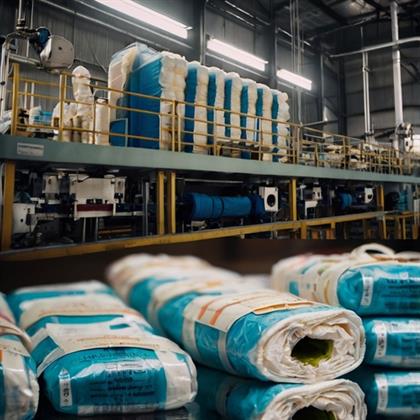
Green Building Materials Market 2031: Sustainability at the Core of Future Construction
October 10, 2024
The Green Building Materials Market is set to experience robust growth by 2031 as the construction industry shifts towards more sustainable and environmentally friendly practices. This shift is a direct response to the global push to reduce carbon emissions and minimize the environmental impact of new building projects. Green materials, which are designed to be energy-efficient, durable, and low in environmental impact, are becoming a cornerstone of future construction trends.

Growing Demand for Eco-Friendly Solutions
As urbanization continues to expand, the demand for sustainable building practices is increasing. The Green Building Materials Market is benefiting from stricter government regulations aimed at reducing carbon footprints, as well as incentives that promote eco-friendly building designs. Governments are focusing on reducing greenhouse gas emissions, which has led to policies mandating the use of energy-efficient and renewable materials in construction.
Private sector initiatives are also playing a crucial role. Many developers are now recognizing that consumers prefer buildings that are not only environmentally friendly but also more energy-efficient, leading to lower utility bills. This has resulted in an increase in the adoption of green building materials for both residential and commercial projects.
Innovations Driving the Market
Technological advancements in the production and development of green materials have been pivotal in driving market growth. Innovations in insulation materials, roofing, and building envelopes have made it possible to construct buildings that require less energy for heating and cooling. For example, smart glass technology, which adjusts its tint based on the intensity of sunlight, can significantly reduce the energy needed for lighting and temperature control in a building.
Recycled and renewable materials are also gaining popularity. Materials like recycled concrete, plastic composites, and reclaimed wood are being used to construct eco-friendly buildings. These materials not only help in reducing waste but also ensure that fewer natural resources are depleted in the construction process.
Regional Market Analysis
North America and Europe have been at the forefront of the Green Building Materials Market, driven by strong regulatory frameworks and a well-established green building culture. The U.S., in particular, has seen a surge in the adoption of green materials, with metropolitan cities such as New York and San Francisco leading the charge. Europe, with its strict energy performance standards, has also embraced green materials, particularly in countries like Germany and the UK.
In Asia-Pacific, the market is growing rapidly as countries such as China and India invest in green infrastructure. Both nations are undergoing rapid urbanization, and the push for sustainable development has become a national priority. Government initiatives and international collaborations are fostering the use of green building materials in these regions, offering significant growth opportunities for the market.
Challenges and Opportunities
The adoption of green materials does face some obstacles. The initial cost of green building materials can be higher than traditional materials, making them less attractive to developers focused on short-term profits. However, this trend is expected to change as green technologies continue to advance and economies of scale lower production costs.
Furthermore, as energy prices continue to rise and awareness about climate change grows, the long-term cost savings offered by energy-efficient green materials will likely outweigh the initial expenses. This creates a compelling case for developers and builders to invest in eco-friendly construction.
In conclusion, the Green Building Materials Market is expected to expand significantly by 2031, driven by a combination of regulatory pressure, consumer demand, and technological innovation. As the construction industry moves towards a greener future, green materials will become a critical component in reshaping urban landscapes and promoting sustainability across the globe.
Leave a Reply
Related Products
You Might Like Also

Forecasting the Future of the Adult Diaper Market 2031
The Adult Diaper Market is set for transformative growth as we approach 2031. With increasing life expectancy and changing societal norms surrounding incontinence Read More

The Future of Advertising: In-Game Advertising Market 2031
The In-Game Advertising Market is on the verge of a transformative era as it continues to gain traction among advertisers looking to connect with consumers in engaging ways Read More

Carbon Black Market Outlook: Growth Prospects and Challenges by 2031
The Carbon Black Market is expected to grow steadily by 2031, spurred by increasing demand from industries like rubber, plastics, and paints. Carbon black Read More

The Energy Harvesting System Market is set to expand significantly by 2031, driven by advancements in technology and the increasing need for sustainable energy solutions Read More

The Future of the Steam Turbine Market by 2031
The Steam Turbine Market is on the cusp of a transformation, influenced by the global energy landscape's evolving demands and technological advancements Read More

The Aquafeed Market is projected to witness robust growth by 2031 as the global aquaculture industry continues to expand Read More











